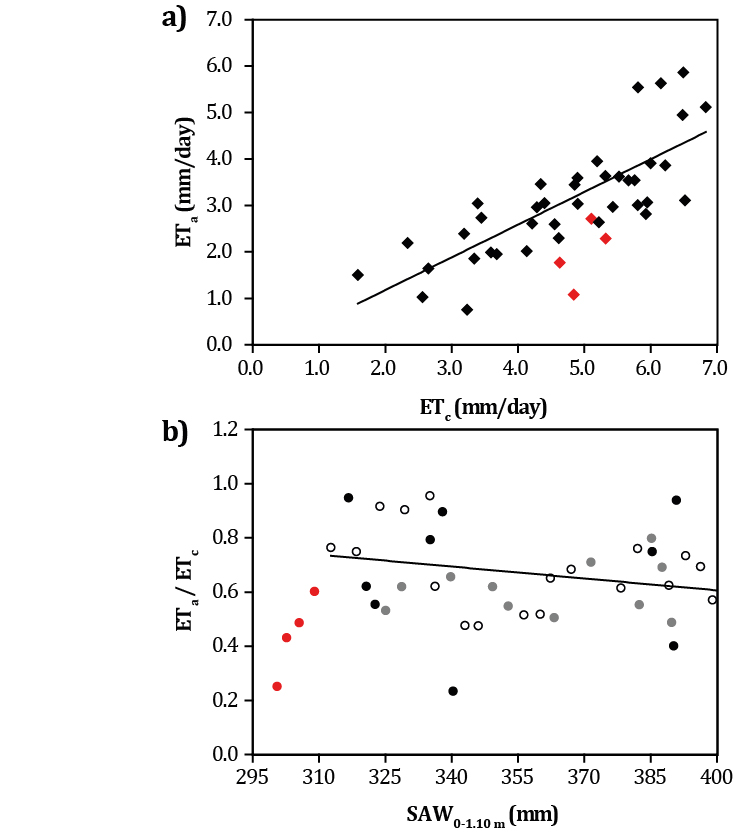Actual evapotranspiration and the pattern of soil water extraction of a soybean (Glycine max) crop
Keywords:
soil water balance, rainfed, Argentina, water stress, water uptake, soybeanAbstract
Crop evapotranspiration knowledge during different phenological stages helps determine crop water requirements and water use efficiency. This study was intended to estimate evapotranspiration of soybean grown under field conditions using the water balance equation and to characterize root water extraction across different soil layers analyzing daily values of its availability. In order to estimate the crop daily water consumption, temporal and spatial variability (vertical) of soil water content up to a depth of 1.10 m was investigated. At the beginning of the experiment, measurements showed that the soybean crop extracted water from the upper levels, and as it continued to grow, water uptake at deeper levels increased. The highest water uptake occurred during reproductive growth stages, which matched the period of highest atmospheric demand. The crop showed a better response to atmospheric demand under water availability, whereas under stress conditions, both evapotranspiration and soil water content decreased.

Downloads
Published
Issue
Section
License
Aquellos autores/as que tengan publicaciones con esta revista, aceptan las Políticas Editoriales.


